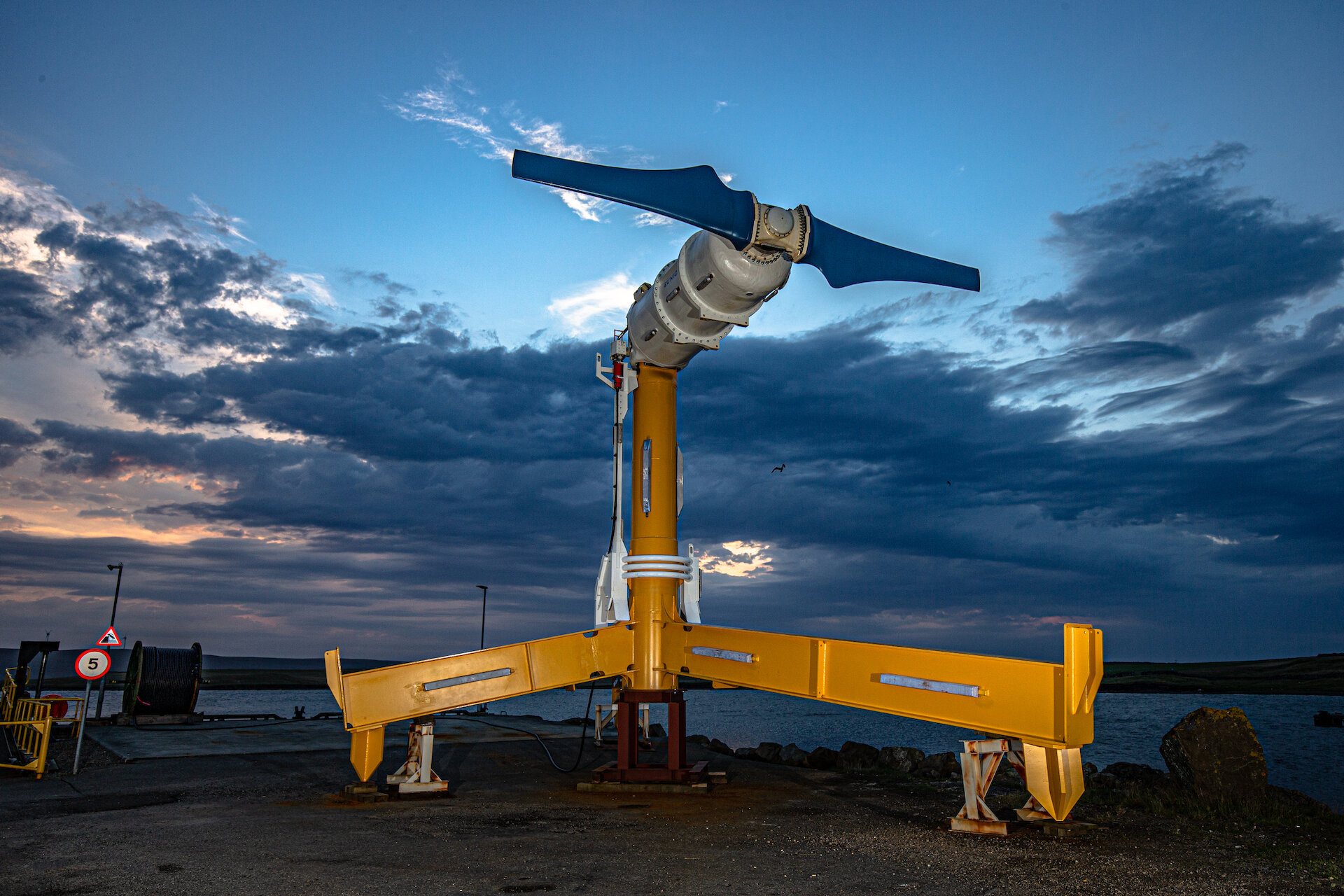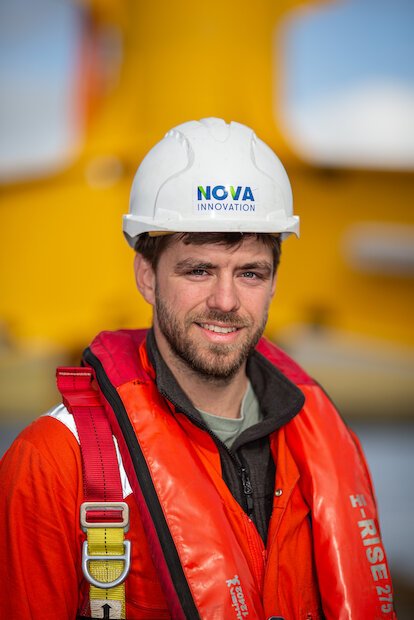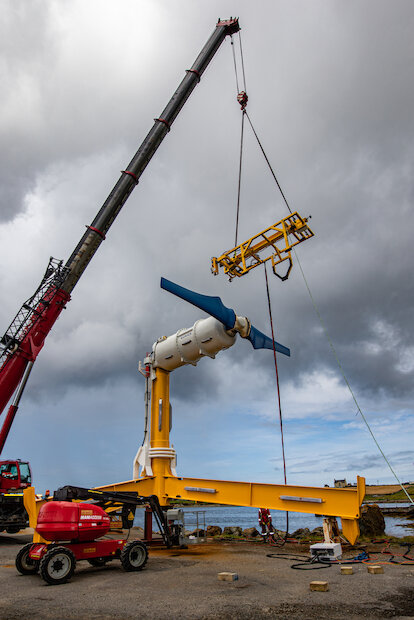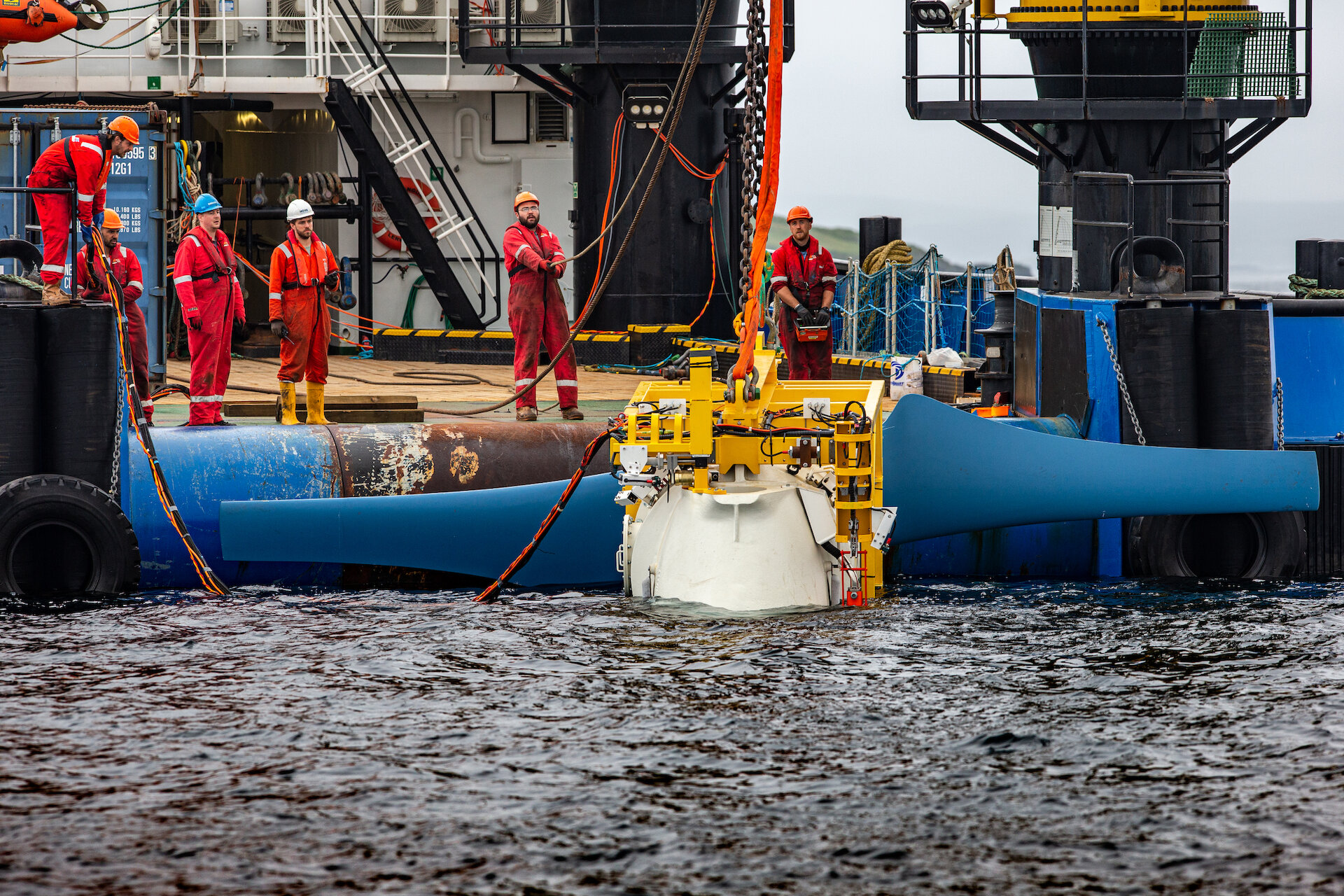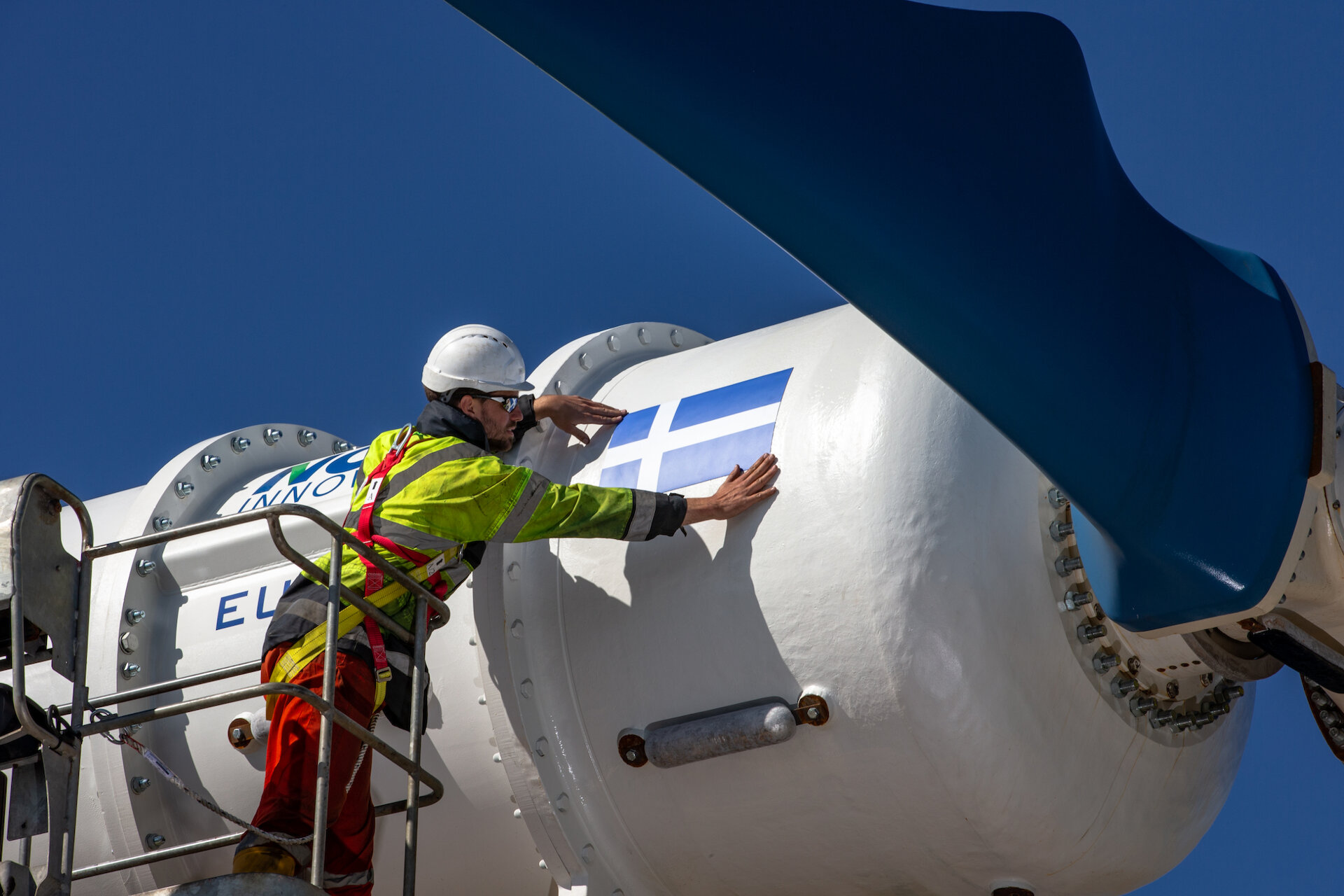There are few things as regular and predictable as the tide. It’s possible to pick a beach and know exactly when high tide will be, a hundred or a thousand years from now. Dictated by the Moon and the Sun, these gravitational pulls are as regular as clockwork.
In Bluemull Sound, the stretch of water between the Shetland North Isles of Yell and Unst, the world’s first offshore tidal energy array is turning this great daily rhythm into electricity. While boats travel across this beautiful stretch of water to the fishing grounds to the north of Shetland, three turbines have been spinning away 20 metres under the surface since 2016.
Installed and run by Edinburgh-based Nova Innovation, a higher performance fourth turbine was added in the autumn of 2020, as part of the EU’s €20 million EnFAIT development project.
